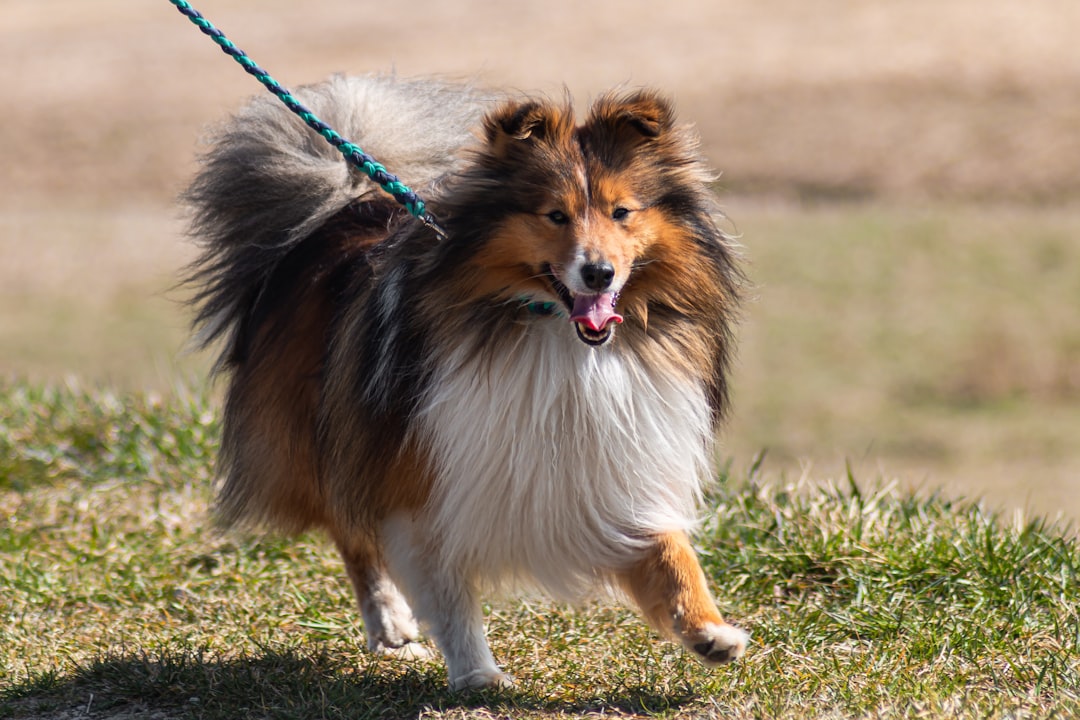As pet owners, we often enjoy sharing our favorite treats with our furry companions, but not all human food is safe for dogs. One popular snack that catches the eye is the Bratwurst sausage hot dog. This savory delight may seem like a delectable treat for your four-legged friend, but it’s crucial to assess its safety and potential health benefits. In this post, we will explore the ins and outs of feeding your dog a Bratwurst sausage hot dog, from its nutritional profile to any risks involved, ensuring that you make informed choices for your pet’s diet. Join us as we navigate the do’s and don’ts of introducing this tempting snack to your dog’s treat repertoire.
What is a Bratwurst Sausage Hot Dog?
Origins of Bratwurst
Bratwurst has its roots in Germany, where it was first crafted in the 14th century. Traditionally made from pork, veal, or beef, this sausage has a distinctive flavor profile due to the carefully selected spices and herbs used in its preparation. Bratwurst means “butcher’s sausage” in German, signifying its historical connection to local butcher shops. Over time, this savory sausage transcended borders, becoming a popular food item in various cultures, particularly in the United States.
Ingredients in a Bratwurst Sausage Hot Dog
The Bratwurst sausage hot dog typically consists of a blend of high-quality meats, such as pork and veal, combined with ingredients like salt, pepper, garlic, and nutmeg. The mixture is encased in a natural or synthetic casing before being cooked or grilled. Unlike standard hot dogs, which may contain fillers, the bratwurst sausage tends to prioritize flavor and quality. This difference contributes to its unique texture and taste, making it a favored choice for many food enthusiasts.
Culinary Uses and Popularity
In terms of culinary uses, the bratwurst sausage is not only popular at summer barbecues but also features prominently at sporting events and Oktoberfest celebrations. Served on a bun, it’s often accompanied by toppings such as sauerkraut, mustard, and onions, enhancing its flavor. The appealing taste and versatility of bratwurst have led to its growing presence in eateries and street food vendors, making it a go-to option for those seeking a hearty and satisfying treat.
Are Bratwurst Sausage Hot Dogs Safe for Dogs?
When considering whether a Bratwurst sausage hot dog is safe for your four-legged friend, it’s essential to evaluate several factors.
Common Ingredients That Are Harmful to Dogs
Many processed meats, including sausages, may contain ingredients that can be harmful to dogs. Typically, these hot dogs are infused with preservatives, excessive sodium, and spices that are not suited for canine consumption. For instance, garlic and onion powder are known to be toxic to dogs, leading to serious health issues. Always check the label for hidden ingredients before sharing.
Portion Control and Moderation
If you’re contemplating giving your dog a hot dog as a treat, practice portion control. A small amount on occasion may be acceptable, but overindulging can lead to obesity and gastrointestinal distress. When introducing new foods, moderation is key; break the hot dog into small pieces to minimize any risks associated with choking or digestive issues.
Identifying Allergies in Your Dog
Some dogs may have allergies or sensitivities to certain ingredients found in hot dogs. Watch for signs such as itching, swelling, or gastrointestinal upset after consumption. If you notice any negative reactions, consult your veterinarian. Keeping a close eye on your dog’s health when introducing new foods ensures their well-being and helps you determine the safety of treats in the future.
Health Benefits of Bratwurst Sausage Hot Dogs for Dogs
Protein Content
One of the primary benefits of this delicious treat is its high protein content. Bratwurst sausage hot dog typically contains a substantial amount of meat, providing an excellent source of protein necessary for your dog’s muscle development and overall health. Protein plays a crucial role in repairing tissues and supporting a strong immune system, making it an essential component of your dog’s diet.
Essential Nutrients and Vitamins
In addition to protein, these sausages can offer essential nutrients and vitamins. Meat often contains vital elements such as B vitamins, iron, and zinc, which contribute to robust energy levels and a healthy coat. B vitamins, for example, are responsible for various bodily functions, including metabolism and nervous system maintenance. Adding a small portion of this treat can introduce beneficial nutrients that support your furry friend’s health.
Hydration Considerations
Moreover, the cooking process of these sausages generally incorporates moisture, aiding in hydration. Proper hydration is crucial for your dog’s health, influencing digestion and organ function. Including a Bratwurst sausage hot dog in moderation may help bolster hydration, especially on hot days or after intense play sessions. However, ensure that fresh water remains readily available to maximize your dog’s health and well-being.
Potential Risks of Feeding Bratwurst Sausage Hot Dogs to Dogs
High Sodium Levels
One of the primary concerns when considering this type of sausage for your pet is the high sodium levels typically found in these processed meats. While humans can tolerate sodium in moderate amounts, dogs may be more sensitive to increased salt intake. Excessive sodium consumption can lead to health complications such as hypertension and even kidney disease in dogs. Always check the label before sharing any sausage with your furry friend.
Additives and Preservatives to Watch For
Furthermore, many processed sausages contain additives and preservatives that could be harmful to your dog. Ingredients like nitrates, nitrites, and various artificial flavors can contribute to gastrointestinal upset or allergic reactions in some pets. Firmly evaluate the ingredient list before feeding your dog this treat, as some common preservatives may not be suitable for their sensitive systems.
Choking Hazards and Preparation Recommendations
Lastly, larger chunks or improperly prepared sausages can pose significant choking hazards for your dog. To minimize this risk, cut the sausage into small, manageable pieces, ensuring that they’re easy for your pet to chew and swallow. Additionally, consider cooking the sausage thoroughly to eliminate any harmful bacteria. Keep in mind, moderation is key; treats should not exceed 10% of your dog’s daily calorie intake, regardless of the food type.
How to Safely Introduce Bratwurst Sausage Hot Dogs to Your Dog
Starting with Small Portions
When considering adding new foods to your dog’s diet, starting with small portions is essential. For example, cut a small piece of the Bratwurst sausage hot dog and offer it as a treat. This method allows you to gauge your dog’s reaction to the new flavor while minimizing the risk of digestive upset. Remember, moderation is key; only provide a tiny sample initially, ensuring that your dog does not consume too much too quickly.
Monitoring Your Dog’s Reaction
After introducing a new treat, closely monitor your dog’s reaction. Watch for any signs of discomfort, such as vomiting, diarrhea, or changes in behavior. If your dog enjoys the initial taste without any adverse reactions, congratulations! You can gradually increase the portion size over time. However, if you notice any unwanted symptoms, it may be best to discontinue offering this food and consult your veterinarian for advice.
Alternatives to Processed Sausages
If you find that your dog does not tolerate the sausage well, don’t worry; there are plenty of alternatives. Consider healthier options like lean meats or specially formulated dog treats that offer essential nutrients without the risks associated with processed meats. Fresh fruits or vegetables can also provide tasty and nutritious snacks for your canine companion and keep their diet varied and exciting.
What to Do If Your Dog Has an Adverse Reaction
Identifying Symptoms of Distress
When introducing any new food, such as a Bratwurst sausage hot dog, monitoring your dog for adverse reactions is crucial. Signs of distress may include vomiting, diarrhea, or unusual behavior such as excessive scratching or lethargy. Additionally, be aware of more severe symptoms like swelling around the face or mouth, difficulty breathing, or collapse. Knowing these symptoms can help you react promptly and ensure your dog’s safety.
Steps to Take After Feeding
If you suspect that your dog has reacted negatively to the Bratwurst sausage hot dog, take immediate action. First, remove any remaining food from their reach and clean up the area to prevent further ingestion. Next, observe your dog closely for at least 24 hours, keeping track of any changes in behavior or health. Offering fresh water can help flush out any potential toxins if upset stomach symptoms occur.
When to Consult a Veterinarian
If your dog exhibits severe symptoms such as persistent vomiting, difficulty breathing, or if there’s no improvement after a few hours, it’s vital to contact your veterinarian immediately. Don’t hesitate, as timely veterinary care can be critical in managing adverse reactions. Always have a plan in place, especially when trying new foods, to safeguard your beloved pet’s health.
Alternative Healthy Treats for Dogs
Offering Bratwurst sausage hot dog alternatives can not only satisfy your dog’s cravings but also ensure their dietary needs are met. Here are several excellent options to consider.
Homemade Sausage Recipes
Creating homemade sausage treats allows you to control the ingredients. You can use lean meats like chicken or turkey, mixed with dog-friendly herbs. Simple recipes require minimal effort; just grind the meat, season it sufficiently, and shape it into small patties or treat bites. Baking or grilling provides enjoyable textures without harmful additives, making it a nutritious alternative.
Other Safe Meats for Dogs
Various meats are safe and healthy for dogs. Lean cuts of beef, turkey, and chicken can make excellent supplementary treats. These proteins can be boiled, baked, or dehydrated into jerky-style treats, providing an enticing option for your furry friend. Remember to avoid processed meats, as they often contain harmful preservatives and excess sodium.
Fruits and Vegetables as Dog Treats
Incorporating fruits and vegetables into your dog’s diet can offer essential nutrients while adding variety. Carrots, blueberries, and sweet potatoes are highly regarded for their health benefits. They can be served raw, steamed, or blended into homemade treats. Always ensure that any fruit or vegetable you offer is safe for canine consumption, as some can be toxic to dogs.
Frequently Asked Questions
Can dogs eat bratwurst sausage hot dogs?
While bratwurst sausage hot dogs can be an enticing treat for dogs due to their rich flavor, they are not generally recommended as a regular part of a dog’s diet. These hot dogs often contain high levels of sodium, preservatives, and spices that can be harmful to dogs. Additionally, some ingredients like garlic and onions, often found in sausage, can be toxic to canines. It’s best to consult with your veterinarian before offering any human food to ensure it’s safe for your specific dog.
What ingredients in bratwurst hot dogs are harmful to dogs?
Bratwurst hot dogs may contain several ingredients that are not suitable for dogs. Common ingredients that can be harmful include garlic and onion powder, which are both toxic to dogs and can cause gastrointestinal upset or more serious health issues. Additionally, the high sodium content and additives like nitrates and preservatives in processed meats are not ideal for canine health and can lead to obesity or kidney problems if consumed frequently.
How should I prepare bratwurst for my dog if I decide to give it to them?
If you choose to give your dog a bratwurst sausage as a treat, ensure it is cooked thoroughly and served plain, without any seasonings, onions, or garlic. It’s advisable to cut the sausage into small, manageable pieces to prevent choking and to limit the serving size to only a small portion of your dog’s regular meals. Always monitor your dog for any adverse reactions after eating new foods and consult a vet if unsure.
What are the healthier alternatives to bratwurst for my dog?
Instead of bratwurst sausage hot dogs, consider offering your dog healthier alternatives like lean boiled chicken, turkey, or fish that are free from seasoning. Vegetables such as carrots, sweet potatoes, or green beans can also be excellent treats. Many pet stores now offer specially formulated dog treats that mimic the flavors of human food without harmful ingredients, ensuring your furry friend gets a tasty treat that’s safe and nutritious.



